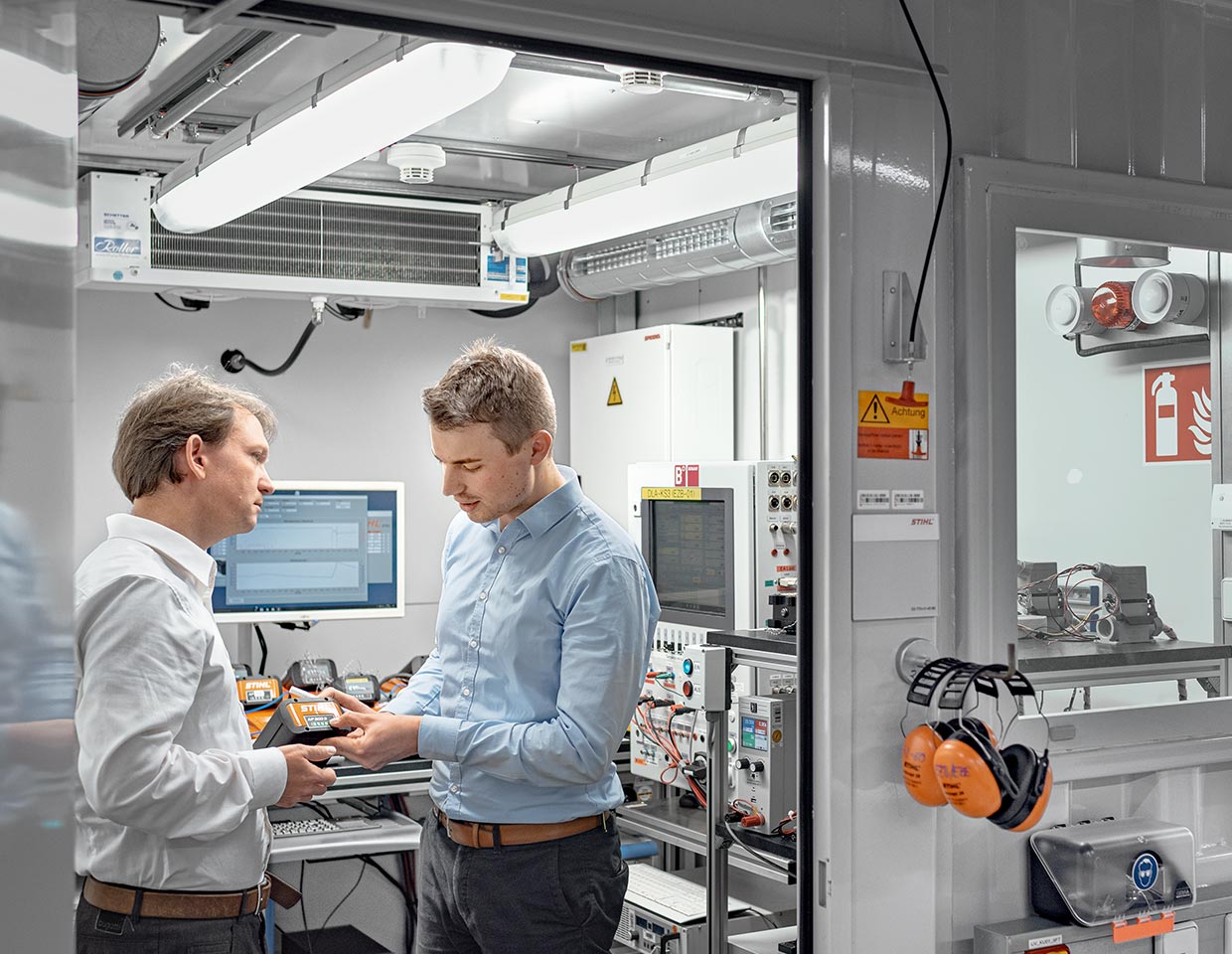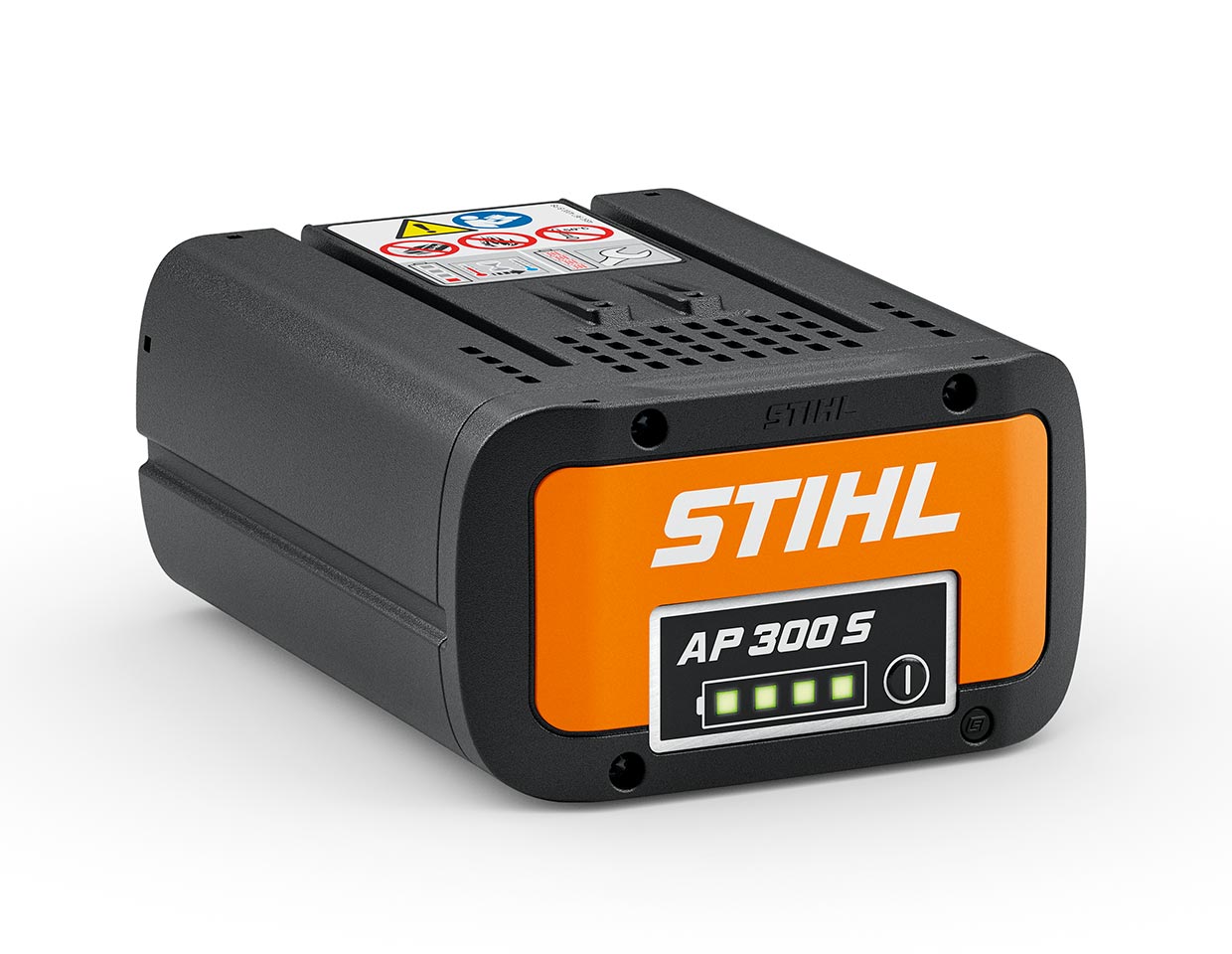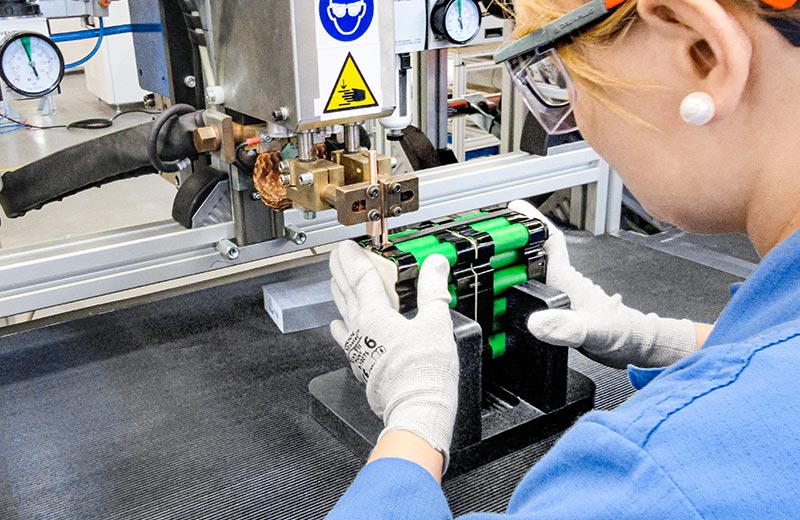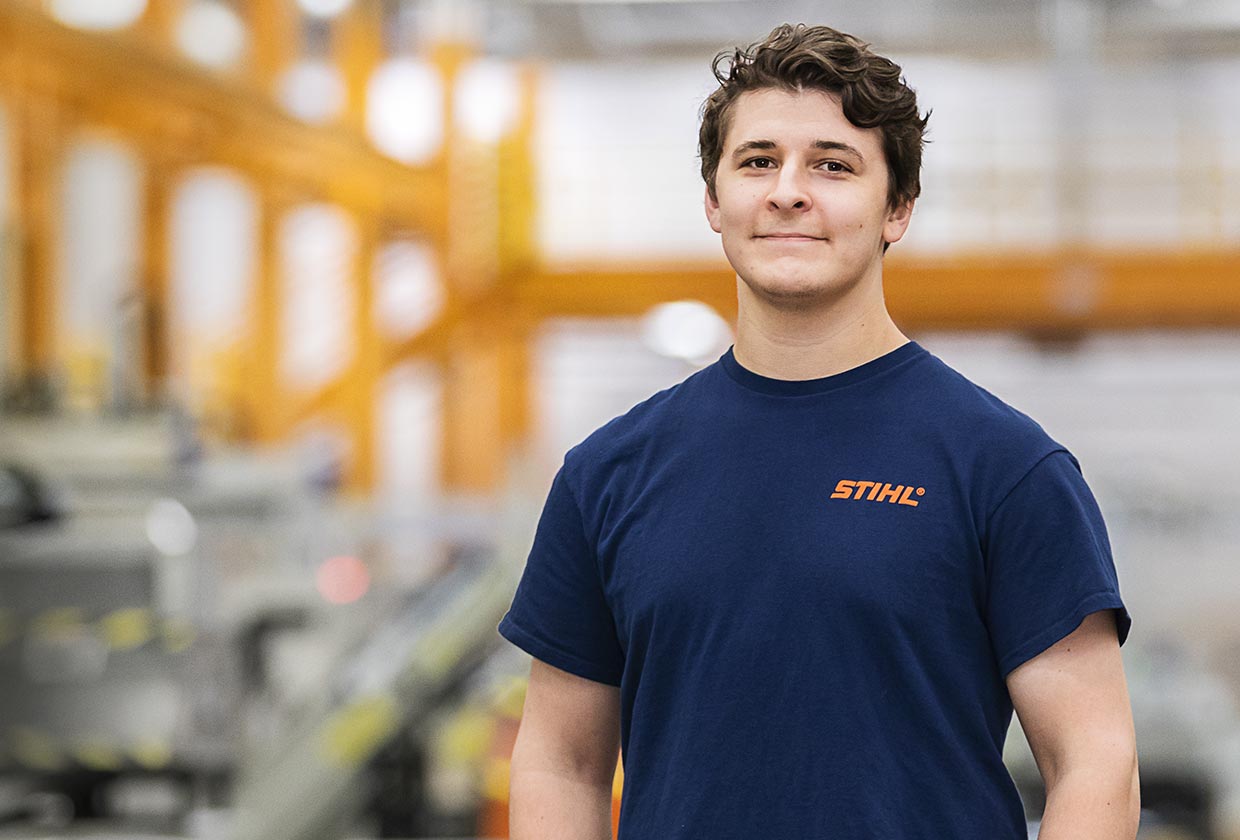At first glance, battery-powered technology doesn’t have much to do with gasoline products. But on closer inspection, it soon becomes clear that the development of new battery-powered tools links a wealth of new knowledge with a great deal of experience from other areas. Take the STIHL AP 300S, for example. This new battery pack is the product of new and innovative methods that are built on the foundation of existing knowledge and expertise developed over decades.
Developed in-house
01

THE PRODUCT IDEA
Department
System Design Battery Packs
It all starts with an idea. And sometimes, the idea is both abstract and crystal clear: more power for a new chainsaw, using a battery pack that will become the centerpiece of a new generation of STIHL batteries. The new motor will have over 2.1 kilowatts of power output – far beyond anything currently available on the market. To make this idea a reality, the entire development team must build up new competencies and new areas of knowledge, but not in the abstract – they can also rely upon a vast store of internal experience and expertise developed over decades.
02
CONCEPTUALIZATION AND
INITIAL PROTOTYPE
Department
System Design Battery Packs, Materials Technology Tribology
What cell will be able to meet the new requirements? How can higher electrical currents be harnessed safely and effectively? The concept stage involves many meetings, calculations, virtual and real-world tests and evaluations of the new cells’ power, safety and durability. The capacity to carry higher currents is one of the biggest challenges. To get it to the right level, the STIHL AP 300S is designed with a whopping 30 cells, all connected with each other to unlock power that has never before been possible. And yet, that isn’t the only issue. Existing materials and bonding techniques cannot accommodate the desired power levels. New ideas and new materials will be needed for a new, innovative method.


03

Simulation and
Optimization
Department
Flow Calculation Methods
Simulations of structural mechanics and thermal properties start when the prototypes are put together, if not before. This is true of both battery-powered products and traditional products that run on gasoline. In both cases, simulations help engineers replicate complex processes and enable targeted improvements early in the development process, cutting down on the total number of testing cycles and developmental iterations. The new packs also undergo their first safety tests, including the drop tests they will need to pass before they are approved, on the computer. Feedback from the simulations reaches the product designers quickly, so they can tweak the design. This is an important point, since the housing of the STIHL AP 300S was developed in-house.
“Our approach was to harness the knowledge we had gained from developing gasoline products for new issues in battery-powered technology and expand on it with new areas of focus. ”
Henrik Gaul, Department Head Battery Pack Development04
Testing
Department
Battery Pack Validation
The prototypes of the new battery packs are put to the test on proprietary test benches at Plant 2 in WaiblingenNeustadt. A wide range of tests are performed to help uncover any potential issues with the design, configuration or applications. The tests focus on things like maximum temperatures during charging and discharging. Short circuits and electrical overloads are induced artificially to confirm that stringent safety requirements are met. A battery pack’s lifespan and robustness are also part of the extensive testing phase of development. In the process, ANDREAS STIHL holds itself to a higher standard. All newly developed items must meet the company’s own stringent quality standards.


05


SERIES PRODUCTION
Department
Product Development: Battery Packs and Chargers, Advanced Production Development and Strategic Product Development
The new bonding method for connecting the 30 cells in the STIHL AP 300S is part of what makes the product special. It reaffirms STIHL’s claim to technological leadership. STIHL is one of the first companies in the world to use a laser welding process for battery packs in the power tools segment. The copper connections, thinner than half a millimeter, are welded to the terminals of the cells using a precision laser. The path toward this innovative method involved substantial testing and simulations to achieve optimal performance, not to mention extensive dialog with external partners. And the result? The laser welding process is now in use for the STIHL AP 100, 200, 300 and 300S and in the AR 200L and 3000L manufacturing at ANDREAS STIHL’s production facilities in Waiblingen-Neustadt. For one professional product, the STIHL AR 3000L, the team is tasked with connecting not just 30, but 90 cells. This is only possible using the new method.

What drives us?
OUR Vision.
Anke Kleinschmit has been the STIHL AG Executive Board member responsible for Research and Development since July 2019. Before that, she was in charge of the powertrain technology factory at Daimler AG, where she drove forward the digitalization of production activities, among other initiatives.
Ms. Kleinschmit, you’ve been the Executive Board member for Research and Development at STIHL for nearly a year now. If you could describe the past few months in just one word, what would it be?
Anke Kleinschmit (laughs) Eventful is probably the word that best describes 2019. It’s really exciting for me to be new at STIHL and get to know the company, the people and the culture. I also think it’s important to experience the products, to come to identify with them and to have fun with them.
What do you think will be particular areas of focus in your future work?
Anke Kleinschmit Right now we’re working on optimizing the product development process – and not just in one or two places, but along all of the interfaces. We’re also hard at work on product topics: What sets STIHL products apart, and what do we want to stand for as a brand? To me, where we want to go in the future is the most important factor, and I discuss it a lot, both with my team and across departments.
STIHL battery-powered products are in high demand, and they are making advances all over the world. That also means they are taking the place of gasoline-operated tools earlier than anticipated. What tasks are product developers at STIHL facing in this context?
Anke Kleinschmit We have great expertise in gasoline-powered products, which we want to maintain. These are, and will remain, our core products. But it is crucial for us to invest in new technologies as well. That means not only battery-powered products, but also whole new ecosystems and business models, where we need to consider how we can recapture the ground being lost by gasoline models.
How will STIHL retain its technology leadership now and into the future?
Anke Kleinschmit Through more advanced development. The goal is to identify relevant technologies and innovations at the right time. My objective is for us to develop a clear vision of what STIHL should stand for in the future, including what business field we will operate in and what expectations customers will have for our products. We need to tackle this task, driven by our own vision. We don’t always have to be the first to market, but we should be sure to view ourselves as one of the best.
Ms. Kleinschmit,
Thank you for talking with us.


